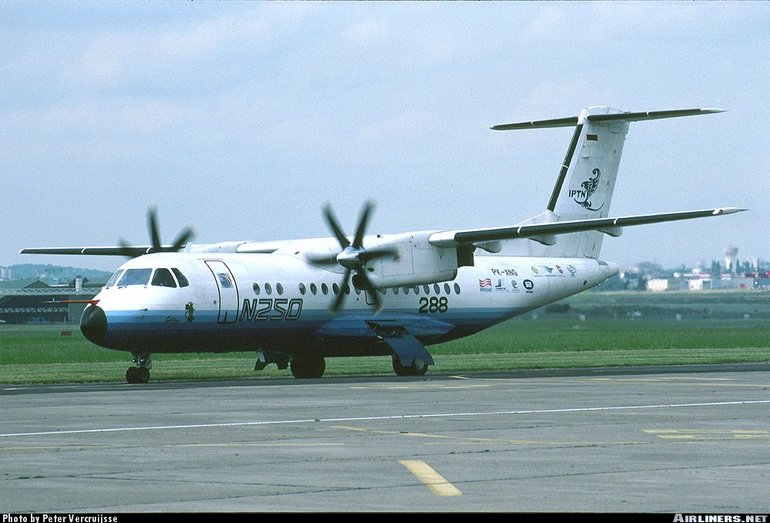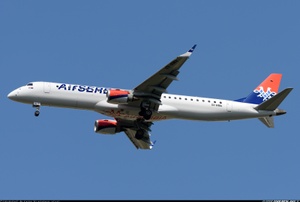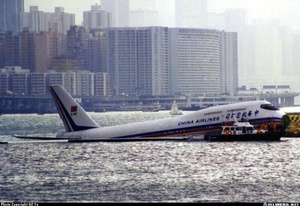IPTN N-250
Details
Country of Origin
Indonesia
Type
64/68 seat turboprop regional airliner
History
The advanced N250 is the Indonesian aerospace industry's most ambitious project yet but in late 1998 looked in danger of stalling due to the Asian financial crisis.
IPTN announced development of the N250 at the 1989 Paris Airshow. Prototype construction began in 1992 but by this stage calculations showed that the 50 seater would be overweight, and so IPTN decided to stretch the basic aircraft to seat 64 to 68 passengers. At the time only the first prototype was to be built to the 50 seat N250 standard, subsequent aircraft would have been to the larger N250100 specification. However in late 1995 this plan was amended and the 50 seat N25050 was again added to the model line-up alongside the larger N250100.
Features of the N250 include flybywire, a glass EFIS Rockwell Collins Pro Line 4 avionics system and Allison AE 2100 turboprops.
The N-270 is a planned 70 seat, 3m (10ft) stretched development which would be built in the USA by AMRAI (American Regional Aircraft Aircraft Industries). IPTN, General Electric and US investors established AMRAI to build the N270 at Mobile, Alabama but delays in the program have stalled this project. In 1997 IPTN also negotiated with Euro Regional Aircraft Industry (ERAI) to build the N-250-100 in Germany.
PA1, the 50 seat first prototype, first flew on August 10 1995, while PA2, the first N-250-100 development aircraft, began test flying in 1997. Work on a third prototype had virtually come to a complete stop by late 1998 and plans to build a fourth have been scrapped.
Indonesian certification was originally scheduled for mid 1997 and US certification for late 1997, but certification compliance issues and the Asian financial crisis conspired to delay the program and possibly stall it all together.
Powerplants
Two 2439kW (3271shp) Allison AE 2100C turboprops driving six blade constant speed Dowty Rotol propellers.
Performance
N25050 - Max cruising speed 610km/h (330kt), economical cruising speed 555km/h (300kt). Initial rate of climb 1970ft/min. Service ceiling 25,000ft. Range with 50 passengers and standard fuel 1480km (800nm), range with 50 passengers and optional fuel 2040km (1100nm).
Weights
N25050 - Operating empty 13,665kg (30,125lb), max takeoff 22,000kg (48,500lb). N-250100 - Operating empty 15,700kg (34,612lb), max takeoff 24,800kg (54,675lb).
Dimensions
N25050 - Wing span 28.00m (91ft 11in), length 26.30m (86ft 4in), height 8.37m (27ft 6in). Wing area 65.0m2 (700sq ft). N-250100 - Same except length 28.12m (92ft 3in), height 8.78m (28ft 10in).
Capacity
Flightcrew of two. Typical accommodation in N25050 for 50 to 54. N250100 will seat up to 62 to 64 passengers at four abreast at 81cm (32in) pitch, 68 at 76cm (30in) pitch, or 60 at 81cm (32in) with optional extra cargo.
Production
At late 1998 firm orders stood at over 30.
Related Links
IPTN N-250
The backbone of this section is from the The
International Directory of Civil Aircraft by Gerard Frawley
and used with permission. To get your own copy of the book
click here.


















